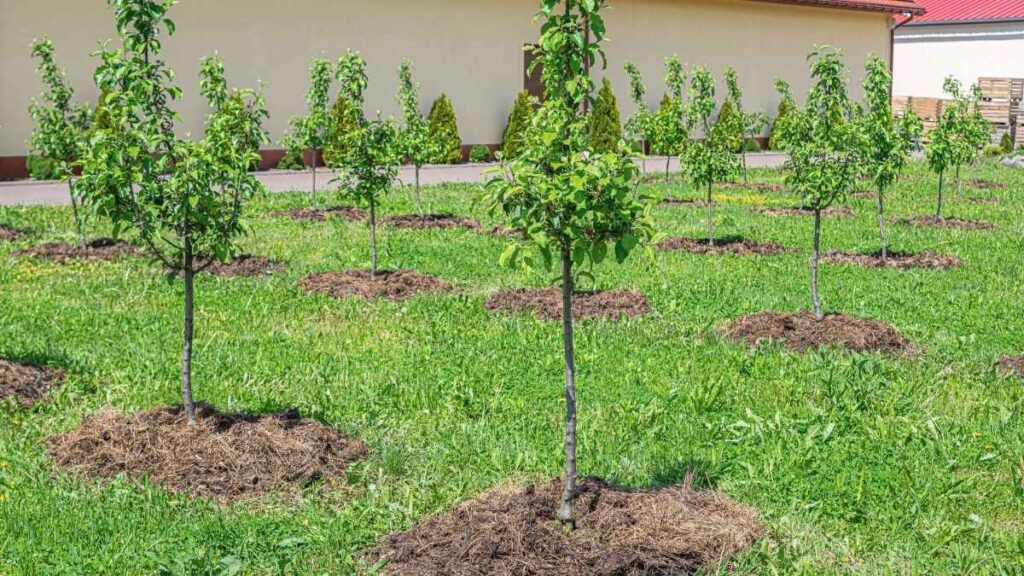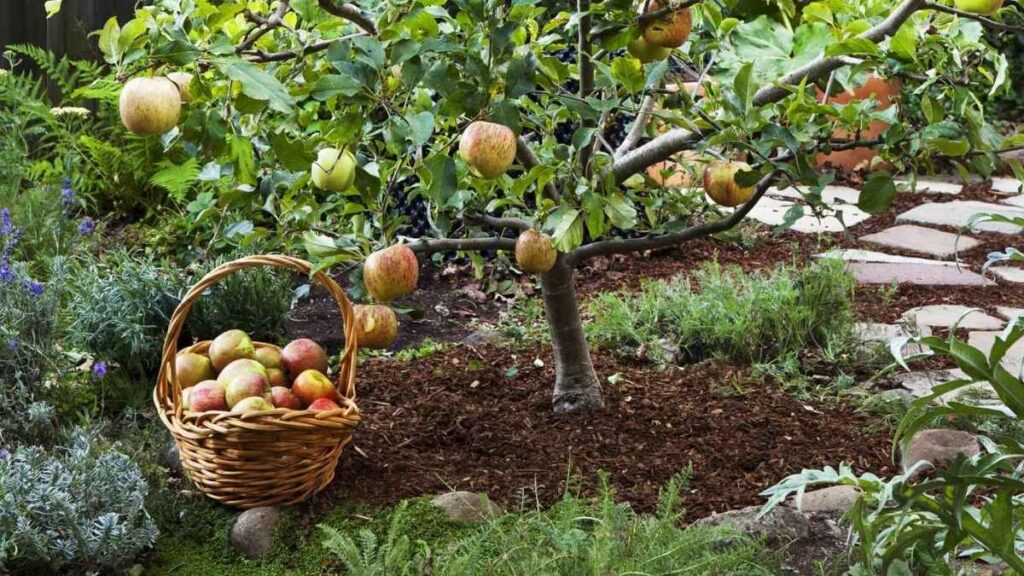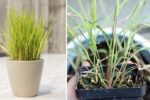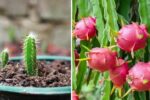Growing dwarf apple trees in small yards is a fantastic way to enjoy fresh fruit without requiring a large amount of space. Dwarf apple trees offer all the benefits of traditional apple trees but in a compact form that is perfect for limited areas. By following the right techniques and providing the proper care, you can harvest a generous supply of apples, even in a small backyard or garden. Here’s how to make the most of growing dwarf apple trees in your small yard.
Why Grow Dwarf Apple Trees?
There are many compelling reasons to grow dwarf apple trees, especially in smaller spaces. These trees are perfect for those with limited yard space or those looking for a more manageable tree to care for. Here are a few reasons why you should consider planting a dwarf apple tree:
- Space Efficiency: Dwarf apple trees take up far less space than traditional apple trees, making them ideal for small yards, patios, or even containers.
- Faster Harvests: Dwarf apple trees usually begin bearing fruit within 2 to 3 years, much sooner than larger varieties that can take 4 to 5 years to produce.
- Easier Maintenance: Their smaller size makes dwarf trees easier to prune, water, and harvest, which is a significant advantage for gardeners with limited time or physical space.
- Aesthetic Appeal: Dwarf apple trees also add beauty to your landscape, offering lovely spring blossoms and productive autumn fruit, making them a great choice for decorative or functional gardening.
With these advantages, it’s no wonder that dwarf apple trees are becoming a popular choice for gardeners looking to maximize their harvest in limited space.
Choosing the Right Dwarf Apple Tree Variety

When selecting a dwarf apple tree for your yard, it’s important to pick a variety that will thrive in your climate and soil conditions. Dwarf apple trees come in many different types, including semi-dwarf and true dwarf varieties. Some popular dwarf apple tree varieties include:
- ‘Fuji’: Sweet, crisp apples, great for fresh eating.
- ‘Gala’: Smaller apples with a mild, sweet flavor.
- ‘Honeycrisp’: Known for its juicy, crisp texture.
- ‘Gravenstein’: Tart apples ideal for baking or making sauces.
These trees are bred to grow smaller, typically reaching heights of 6 to 8 feet, making them ideal for tight spaces.
Ensure that the variety you choose is compatible with your USDA hardiness zone. This will ensure that your tree can handle the weather conditions in your region. It’s also important to note that some dwarf apple trees require cross-pollination, so you may need to plant two different varieties to increase fruit production.
Preparing the Planting Site

Dwarf apple trees need well-draining soil and plenty of sunlight to produce a bountiful harvest. Choose a location that receives at least 6 to 8 hours of direct sunlight per day. A spot that gets full sun will encourage better flowering and fruiting.
Before planting, prepare the soil by ensuring it is loose, fertile, and slightly acidic. If your soil is heavy or clay-like, amend it with organic compost or sand to improve drainage. If the soil is too alkaline, adding sulfur can help to lower the pH.
Planting your dwarf apple tree in a raised bed is an excellent option if your soil is not ideal. Raised beds can provide better drainage and prevent root rot.
Planting the Dwarf Apple Tree

The best time to plant a dwarf apple tree is in early spring or late fall when the tree is dormant. Here’s how to plant your tree correctly:
- Dig the Hole: Dig a hole that is twice as wide as the root ball but no deeper.
- Position the Tree: Place the tree in the hole, ensuring that the root flare (where the roots meet the trunk) is level with the soil surface.
- Backfill and Water: Fill the hole with soil, firm it down gently, and water thoroughly to settle the soil around the roots.
- Mulch: Apply a 3-inch layer of mulch around the base of the tree, keeping it a few inches away from the trunk to prevent rot.
Proper planting will ensure that your tree establishes strong roots and begins growing healthily.
Watering and Fertilizing for Optimal Growth
Dwarf apple trees require consistent watering and proper fertilization to thrive. Here are some tips for watering and fertilizing:
- Watering:
- Water deeply once a week, especially during dry spells, ensuring water reaches the root zone.
- Avoid over-watering, as this can lead to root rot. Water early in the morning to minimize disease risk.
- Fertilizing:
- Apply a balanced, slow-release fertilizer in early spring before new growth starts.
- Use organic fertilizers like compost or well-rotted manure for a natural boost.
Proper care with water and nutrients helps your tree grow strong and healthy.
Pruning for Shape and Productivity

Pruning is essential for keeping your dwarf apple tree manageable and productive. Here are some pruning tips:
- Timing: Prune in late winter or early spring when the tree is dormant.
- Remove Dead or Damaged Wood: Start by cutting away any dead, damaged, or diseased branches.
- Shape the Tree: Aim to maintain a central leader system with one main trunk. Trim lateral branches to encourage air circulation and even growth.
- Encourage Fruit: Regular pruning encourages better fruiting and prevents the tree from becoming too large for small spaces.
Pruning is a key factor in controlling the tree’s size and maximizing its fruit yield.
Pollination and Fruit Set
Most dwarf apple trees are not self-pollinating, meaning you will need another apple tree nearby to ensure good pollination. Planting two different varieties of dwarf apple trees will increase the chances of cross-pollination and a higher yield. Make sure the varieties you choose bloom around the same time to ensure compatibility.
In some cases, you may also consider planting a dwarf apple tree grafted onto a different rootstock, which can improve pollination and overall fruit production. If you only have space for one tree, consider purchasing a multi-variety tree that has several different apple cultivars grafted onto a single rootstock. This ensures that your tree will be able to cross-pollinate itself and produce fruit.
Dealing with Pests and Diseases
Like all fruit trees, dwarf apple trees are susceptible to various pests and diseases. Here are some ways to protect your tree:
- Pests: Common pests include aphids, apple maggots, and codling moths. Control pests by using organic insecticides or introducing beneficial insects like ladybugs.
- Diseases: Apple trees can suffer from diseases such as apple scab, powdery mildew, and fire blight. Prevent fungal diseases by pruning for air circulation and applying fungicides as needed.
Regular inspections and proper care can help minimize pest and disease problems.
Harvesting Your Dwarf Apples

Once your dwarf apple tree begins producing fruit, it’s time to harvest. Here’s how to know when the apples are ready:
- Timing: Dwarf apple trees usually start bearing fruit in 2 to 3 years, depending on the variety.
- How to Harvest: Apples should come off the tree easily when given a slight twist. Look for fully colored apples that are firm, but not overripe.
- Storage: After harvesting, store apples in a cool, dark place. Many varieties store well for months, allowing you to enjoy fresh apples well into the winter.
Harvesting at the right time ensures the best flavor and texture.
Conclusion
Growing dwarf apple trees in a small yard can be a rewarding and fruitful experience. By choosing the right variety, planting in the right location, and providing regular care, you can enjoy a healthy, productive apple tree that produces delicious fruit year after year. Whether you’re an experienced gardener or a beginner, dwarf apple trees are an excellent option for maximizing harvests in small spaces. With patience and attention to detail, you’ll be rewarded with the sweet taste of homegrown apples right in your own backyard.



